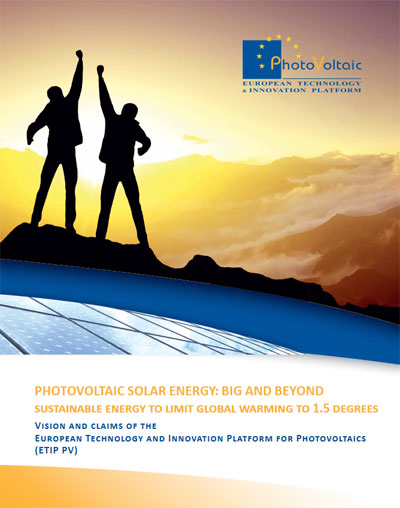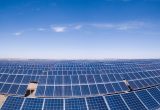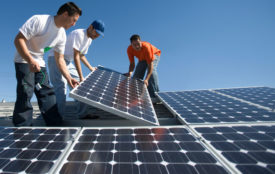ETIP PV publishes the White Paper “Vision and Claims for 100% renewable electricity supply”
White paper published in 8 languages Photovoltaic Solar Energy: Big and Beyond: Sustainable energy to reach the 1.5 degrees climate target The EU should aim on an equitable basis, to reach net-zero emissions domestically by 2050.
Solar PV is a sector of strategic importance for the EU economy, providing energy independence, industrial jobs and economic growth. In Europe, the strategic importance of an independent energy supply is often ignored.
The European Technology and Innovation Platform for Photovoltaics (ETIP PV) aims to actively support achieving the European Union’s green energy policy goals as well as the additional actions needed to limit global temperature rise to 1.5°C. The latter implies realising zero GHG emissions around 2050 and negative emissions thereafter. In the words of the European Parliament: “In line with the aim of the Paris Agreement to achieve a balance between anthropogenic emissions by sources and removals of GHG by sinks in the second half of the 21st century, the EU should aim on an equitable basis, to reach net-zero emissions domestically by 2050, followed by a period of negative emissions.”
ETIP PV envisions in this white paper a world with 100% renewable electricity supply where electricity is accessible to all and where electricity makes major inroads into satisfying final energy demand for living including communications, zero-emission transport and mobility, efficient heating and cooling, and even sustainable fuels, chemicals and materials. By applying Solar PV, buildings will increasingly become places of energy production and not only of energy consumption.
Marko Topič, ETIP PV Chairman: “Our vision is a sustainable future with a clean European and global energy system! Thanks to the abundant availability of solar energy, the technology’s modularity, and continuous cost reductions, Solar PV can become the largest source of energy worldwide and is able to meet the challenge of drastic decarbonisation and there is big potential for further improvements in all related technology with accelerated research, development and innovation (RD&I).”
Photovoltaics is a proven technology capable of making a substantial contribution to a sustainable global energy system. The case for photovoltaic solar electricity (Solar PV) is summarised in the publication as follows:
• Solar PV has recently become the lowest cost source of electricity in most parts of the world
• Solar PV can be used in all geographic regions and its generating capacity can be installed rapidly and scaled up modularly
• Solar PV can drastically reduce GHG emissions from the power sector and in other sectors through electrification
• Solar PV supports a socially acceptable energy transition by offering employment, distributed generation and integrated applications as well as new business opportunities
• Solar PV, in combination with wind energy, storage and conversion (“Power-to-X”) is the cornerstone of the future sustainable energy system
• Solar PV needs to be deployed rapidly, massively, and globally including within Europe to limit global temperature rises to 1.5°C.
• More PV component manufacturing and PV generating capacity is needed in Europe to seize economic opportunities and to reduce dependence on energy imports and on PV technology imports.
Solar PV is transforming Europe’s and the world’s energy system and energy industry. ETIP PV is committed to actively support this to the benefit of climate and economy, as a contribution to the future of mankind and responding to the Sustainable Development Goals shown below.
ETIP-PV’s position is that EU-based manufacturing industry must regroup and succeed in the extremely competitive global Solar PV sector, providing high-quality, technologically advanced products at scale. For this to happen, the EU must ensure a large and growing market for Solar PV installations that values high-quality, highly sustainable products.
- “Photovoltaic Solar Energy: Big and Beyond – Sustainable energy to reach the 1.5 degrees” (download)
![etip-pv.eu | Researchers at LUT have shown that on the assumption that i) no nuclear-, coal-, or oil-based power plants are installed after 2015, and ii) the renewable energy capacity share increase does not exceed 4% per year (3% between 2015 and 2020), then the cost of consumed electricity is minimized worldwide in 2050 with the generation mix shown. Solar PV has a share of 69%. Slide is based on [Ram, 2017].](https://www.sonnenseite.com/wp-content/uploads/2019/06/ETIP-PV_Solar_BigandBeyond_Grafik.jpg)

Source
Europäische Technologie- und Innovationsplattform für Photovoltaik (ETIP PV) 2019







